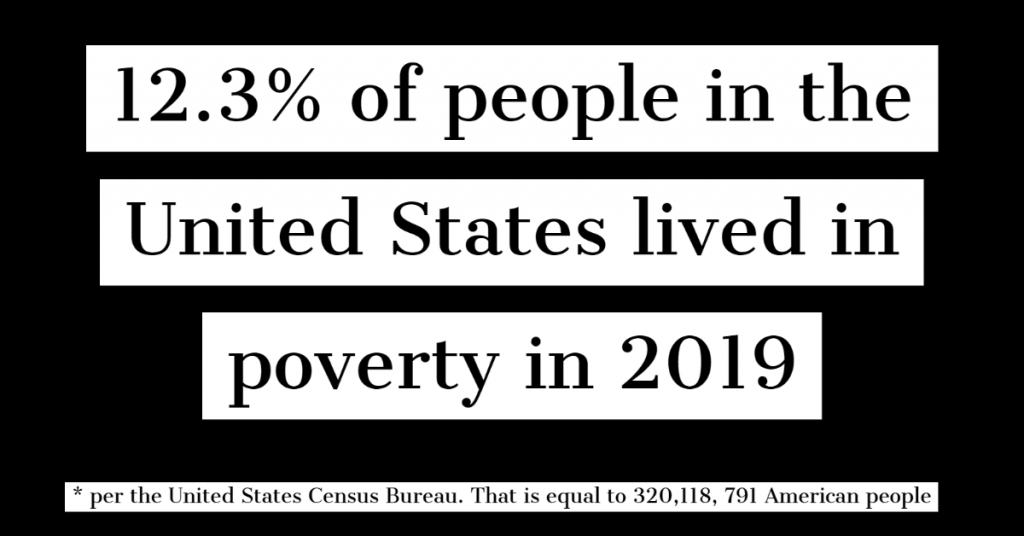
This tip sheet serves as a tool for journalists to use while pitching, writing, producing and editing stories on poverty. While this list doesn’t include every aspect of the subject, it can help you brainstorm how to approach your next story. Here are 10 best practices for covering poverty:
- Get the data and find key documents.
Develop your story from statistics. Gather key documents and data, then connect the numbers to a socioeconomic characteristic related to your beat or a timely issue. After that, compare state and national statistics to what you find to put your story into a greater context.
These resources offer data and key documents.
You can find even more essential data sets here. The facts you find can reveal gaps in the community you’re covering. From there, it’s your job to illustrate those gaps in your storytelling.
To start, look at the level of federal funding intended to boost a community’s economy. You can find that information on Recovery.gov and USAspending.gov. Also, research how a county is allocating stimulus funds on ProPublica. It’s important to follow the flow of money from the government to agencies, trickling down to businesses and consumers.
- Commit to thorough sourcing.
Interview local experts about how poverty affects their community. Think big picture. Ask questions that speak to how the income divide can affect multiple areas of a person’s life.
After you interview the experts, get to know the people who are experiencing the topic you’re covering. If people are willing to speak with you, find out about the community they live in, figure out the cost of their average expenses and how their environment affects their standard of living. Talking to real people will bring your data to life.
“I think the main thing is to get beyond the official sources. Go talk to people at the barber shops and beauty salons. Talk to the people who run convenience stores. They’re the ones who know the people who are coming in.”
– Grey Pentecost, Former Graduate Research Assistant
- Localize your angle.
If you aren’t covering poverty in your own community, find reporters who live in that area and use them as a source for gaining a deeper understanding of public opinion within that community.
It is important for audiences to understand poverty is happening where they live, not just in other parts of the country.
While national politics can feel distant to audiences, local politics focuses on how resources can be delivered and distributed within a community. The poverty rate of a community directly impacts local government services such as the police, schools, hospitals and any other form of social services.
- Understand the terminology.
Learn how to speak the language. Poverty is relevant to several beats. Become an expert on your beat to understand its relationship with poverty. For example, government spending involves complicated language. You have to know the difference between funds that are “awarded” vs. funds that are “allocated,” or what a “cost-plus contract” is. If you don’t know what these terms mean, then you won’t be able to understand the impact they may have on communities below the poverty line.
Understanding terminology is the first step to asking the right questions, especially when you’re interviewing local experts. Communicate in the expert’s language, so they can give you feedback in the appropriate context.
- Narrow your focus.
Poverty is a complex issue. Reporters can’t cover every element of poverty in one story. Find one or two specific areas to focus on and commit to in-depth reporting. Here’s Yale School of Medicine Science Writer, Kathleen Raven, explaining how she approached reporting a story on a healthcare clinic in Greene County, Georgia:
“I knew that Greene County, Georgia was a place of incredible wealth disparity, as evidenced by its Gini coefficient, but that in and of itself did not make for an interesting story. I needed to find a way to present the story through a very specific lens, which I decided would be community healthcare.”
Studies have proven that there is a connection between poverty, crime and mass incarceration, education, health and other regularly-covered beats. Find ways to incorporate poverty-related narratives into other beats rather than covering these stories by themselves.
This enables reporters to provide in-depth coverage on poverty within a specific topic area while still remaining holistic in their overall approach. Journalists don’t have to narrow their poverty coverage to specific beats, but it is a helpful tool to stay concise in their reporting.
- Incorporate multimedia elements.
If you’re writing a written article, take your reporting to another level by adding multimedia elements. Create a story where your readers can not only read about poverty, but give them an opportunity to see and hear what poverty feels like through photos, graphics, video and audio components.
Read this Chattanooga Times Free Press series on poverty called “The Poverty Puzzle.” Notice how the stories are full of photos, infographics and data visualizations that explain what’s happening beyond the words written on the page. Using multimedia elements allows the audience to connect with what’s happening in a story and makes their experience more tangible.
- Connect the dots.
While reporting on poverty, it’s easy to fall into the habit of reporting facts without pulling all the pieces together. Focus on relating public support to policy initiatives that could impact low income residents. This will demonstrate a direct connection on how the public affects poverty, positively or negatively, by their actions.
One of your responsibilities as a reporter is to separate persistent poverty, which is experienced over a longer period of time, and episodic poverty that is onset by temporary economic downturns. By outlining poverty’s many shapes, its past forms and its future trajectory helps audiences understand how it permeates into many aspects of life.
- Time it up.
Like all news, no matter the topic, newsworthiness shapes the public’s perception on an issue. When people are experiencing a collective worry about the economy and community welfare, people’s attention is more receptive to reading on topics. The timing and significance of poverty is determined by the overall state of the economy. Concern about how families are faring during these times of uncertainty is on the minds of the public.
When timing is off for an article, it dispels a feeling of urgency and breeds complacency in an audience. Reporters can help facilitate change by giving voice to issues and raising questions that other people may be too afraid to address.
- Widen your audience.
Audiences are drawn to stories they can relate to. People experiencing poverty is a small part of the audience you should be trying to reach. Stories on poverty should be relevant to everyone.
“Readers who are not poor can relate especially to stories in which they could imagine themselves if their luck ran out, or if they were born into different circumstances,” said Washington Post columnist E.J. Dionne Jr.
“And because many people these days who aren’t poor feel under various financial pressures, there are ways to link their situations to the situations of the poor.”
Income and class will continue to influence both local and national politics in America.
- Share solutions.
Reporting on poverty should exist to inform and ignite action. This can not be done without incorporating solutions-based journalism into the narrative. The Solutions Journalism Network defines this as “character-driven, but focuses in-depth on a response to a problem and how the response works in meaningful detail.”
Adding solutions to a story can take many forms, such as including links to resources, contact information of the sources included in the piece, highlighting ways people can become involved and including information about upcoming events. From analyzing data to sharing solutions journalists have an opportunity to make an impact through their reporting on poverty. Allow these tips to guide you into creating quality content that is relevant to your audience and accurately conveys how poverty affects your community.
Kelsey Coffey and Lillie Beck graduated in fall 2020 with journalism degrees from the University of Georgia.

